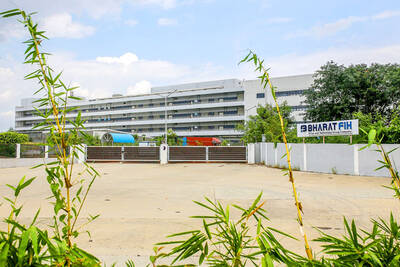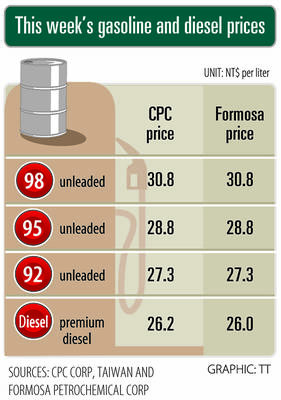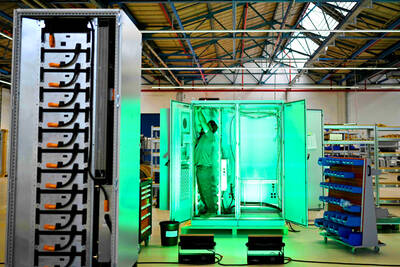The unemployment rate edged up to 3.72 percent last month, ending six months of decreases, as companies in the service sector cut temporary positions after the Lunar New Year holiday, the Directorate-General of Budget, Accounting and Statistics (DGBAS) said yesterday.
The latest jobless figure, while gaining 0.03 percentage point from February, is the lowest in 15 years when compared with the same month of the year, DGBAS Deputy Director Lo Yi-ling (羅怡玲) said.
The statistics official attributed the stable job market to an improving economy at home and abroad, which helped boost domestic wages to a record high in the first two months of the year.
“The jobless rate rose slightly [last month] due to the losses of temporary jobs after the Lunar New Year holiday,” Lo said, adding that some workers quit jobs to search of better ones after obtaining bonuses at the end of the lunar year.
The unemployment rate after seasonal adjustments stood at 3.75 percent last month, also higher than 3.74 percent recorded a month earlier, the DGBAS report showed.
The figures suggested a jobless population of about 431,000 last month, an increase of 3,000 from February, the report said.
The number of people who quit jobs increased by 3,000 last month, while people who lost their jobs due to business closures or seasonal factors increased by 3,000, the report said.
However, first-time job seekers dropped by 3,000 last month, thanks to a growing job pool, the report said.
The service sector hired an extra 93,000 workers, while industrial sectors added 34,000 last month, from a year earlier, the report said.
Unemployment was highest among people with a university degree or higher at 4.71 percent, followed by college graduates at 4.04 percent and high-school graduates at 3.78 percent, the report said.
By age, the 15-to-24 group had the highest unemployment rate at 11.58 percent, compared with 3.91 percent for the 25-to-44 group and 1.99 percent for the 45-to-64 bracket, the report said.
The job market might remain stable going forward, as 1111 Job Bank (1111人力銀行) reported 48,000 job openings last month, the highest in 16 years, the company said in statement.
Regular monthly wages averaged NT$38,148 in February, down 1.03 percent from January, but up 1.64 percent from a year earlier, the DGBAS said in a separate report.
Non-regular monthly wages stood at NT$86,666 in February, more than double the level in the prior year, as improved earnings allowed firms to provide better bonuses to employees, the statistics agency said.
Stripping holiday distortions, regular monthly wages picked up 1.62 percent year-on-year to a record high of NT$38,347 for the first two months, DGBAS data showed, adding that the wage increase would hit 2.2 percent after factoring in inflation.

SETBACK: Apple’s India iPhone push has been disrupted after Foxconn recalled hundreds of Chinese engineers, amid Beijing’s attempts to curb tech transfers Apple Inc assembly partner Hon Hai Precision Industry Co (鴻海精密), also known internationally as Foxconn Technology Group (富士康科技集團), has recalled about 300 Chinese engineers from a factory in India, the latest setback for the iPhone maker’s push to rapidly expand in the country. The extraction of Chinese workers from the factory of Yuzhan Technology (India) Private Ltd, a Hon Hai component unit, in southern Tamil Nadu state, is the second such move in a few months. The company has started flying in Taiwanese engineers to replace staff leaving, people familiar with the matter said, asking not to be named, as the

The prices of gasoline and diesel at domestic fuel stations are to rise NT$0.1 and NT$0.4 per liter this week respectively, after international crude oil prices rose last week, CPC Corp, Taiwan (台灣中油) and Formosa Petrochemical Corp (台塑石化) announced yesterday. Effective today, gasoline prices at CPC and Formosa stations are to rise to NT$27.3, NT$28.8 and NT$30.8 per liter for 92, 95 and 98-octane unleaded gasoline respectively, the companies said in separate statements. The price of premium diesel is to rise to NT$26.2 per liter at CPC stations and NT$26 at Formosa pumps, they said. The announcements came after international crude oil prices

DOLLAR SIGNS: The central bank rejected claims that the NT dollar had appreciated 10 percentage points more than the yen or the won against the greenback The New Taiwan dollar yesterday fell for a sixth day to its weakest level in three months, driven by equity-related outflows and reactions to an economics official’s exchange rate remarks. The NT dollar slid NT$0.197, or 0.65 percent, to close at NT$30.505 per US dollar, central bank data showed. The local currency has depreciated 1.97 percent so far this month, ranking as the weakest performer among Asian currencies. Dealers attributed the retreat to foreign investors wiring capital gains and dividends abroad after taking profit in local shares. They also pointed to reports that Washington might consider taking equity stakes in chipmakers, including Taiwan Semiconductor

A German company is putting used electric vehicle batteries to new use by stacking them into fridge-size units that homes and businesses can use to store their excess solar and wind energy. This week, the company Voltfang — which means “catching volts” — opened its first industrial site in Aachen, Germany, near the Belgian and Dutch borders. With about 100 staff, Voltfang says it is the biggest facility of its kind in Europe in the budding sector of refurbishing lithium-ion batteries. Its CEO David Oudsandji hopes it would help Europe’s biggest economy ween itself off fossil fuels and increasingly rely on climate-friendly renewables. While